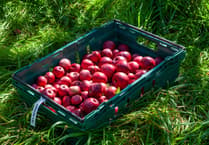WELL, we are certainly into the “season of mists and mellow fruitfulness” as Mr Keats so beautifully described in his poem “To Autumn”, first published in 1820.
Geraldine and I were experiencing it in close-up on a drive back from London with pretty thick mist all the way past an invisible Stonehenge.
Actually, we were in fog and the technical difference between the two is that with mist you can see more than 1000m, whereas in fog visibility is less than 1000m. Not that I knew that till I looked it up.
Fog is made up of tiny water droplets all suspended in what is essentially a cloud on the ground which contains up to 0.5ml of water per cubic metre. To visualise this, if you were to fill an Olympic-sized swimming pool with fog and then somehow condense it, you would be left with around 1.25 litres of water (or just over two pints): which seems odd when you think about a walk on the moor in fog and getting pretty darn wet from the condensed water.
I’ve driven quite a lot in fog, especially in South Africa where it is pretty common in autumn and can be long-lasting. I remember one occasion when I had a coffee and put sunglasses on, only for them to steam up immediately.
Apparently, when driving, most people are aware of the need to slow down in foggy conditions, but did you know fog has a hazardous impact on your speed perception?
Much of how our brains judge speed is by the contrast in our surroundings, such as trees or buildings flashing past in our peripheral vision.
But in foggy conditions, contrast is greatly reduced giving the impression you are driving slower than you actually are. Many drivers increase their speed as a result, which explains a few things.





Comments
This article has no comments yet. Be the first to leave a comment.